Clancy Tucker's Blog, page 247
September 10, 2015
11 September 2015 - S J BROWN - WILDLIFE PHOTOGRAPHER
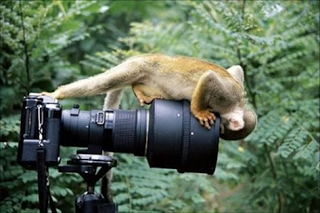
S J BROWN- WILDLIFE PHOTOGRAPHER -
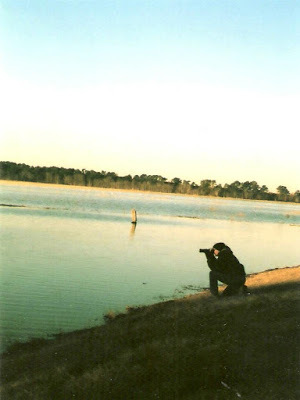
G'day folks,
Welcome to an interview with S J Brown, a wildlife photographer.
1. TELL US A LITTLE ABOUT YOURSELF AND YOUR PHOTOGRAPHIC JOURNEY.
I began totally on a whim after watching a program about wildlife photographers on a Public Broadcasting Station. The more images I captured the more I wanted to capture. I started in my backyard, but quickly moved onto other locations. To date I have photographed critters in twenty-two states, Washington DC and in Canada. With each excursion I learn something new about my subjects or myself.
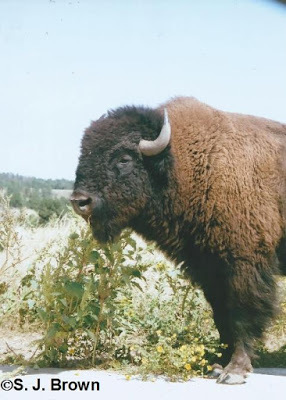
2. WERE YOU INTERESTED IN PHOTOGRAPHY AS A KID?
No, not really
3. WHAT WAS YOUR FIRST CAMERA?
I don't remember my first camera, but I do remember one I was very sad to let go. It was a Fuji 110 camera that took spectacular pictures.
4. WHAT EQUIPMENT DO YOU PREFER TO USE NOW?
I use Cannon Rebels, I have 3, two of them are always packed and ready to go. I also pack lots of Fuji Film. Of course I have a variety of lens . My favorite is my 300. It is small enough to take into any situation, and doesn't require a tripod.
5. WHY DO YOU USE YOUR INITIALS.
Early in my career I noticed my submissions to publishers were being returned unopened. They just assumed a woman couldn't get the images they were looking for.
Once I began using my initials my submissions were being opened. Yes, some of my work was still getting rejected, but they were at least looking at the images.
Today most submissions are done over the internet or through the mail. The majority of publishers assume I am a man and I have even received checks made out to Mr. S. J. Brown.
My gender isn't really the issue. It is the images that matter. So I happily cash those checks. When a publisher learns that I am a woman they are usually surprised, and they have learned something.
6. WHAT DO YOU ENJOY MOST ABOUT YOUR JOB?
The encounters with wildlife. The camera is an excuse to get just a little closer and a way to share those experiences.
7. WHAT IS THE HARDEST THING ABOUT BEING A PHOTOGRAPHER?
Days when I can't locate my desired subject really suck. It is actually harder than it looks, The weather and terrain can make me really work for my images sometimes. Not all critters are co operative.
Marketing my work isn't much fun either. I find it hard to sit in my office and concentrate.

8. DO YOU WORK FOR YOURSELF, OTHERS OR BOTH?
I totally freelance. I shoot what I want, when I want. Then I find a market for the images.
9. WHAT WERE YOU IN A PAST LIFE, BEFORE YOU BECAME INVOLVED IN PHOTOGRAPHY?
I owned a ceramic shop for many years. My first photographic sales were in that shop. Next to ceramic figurines of animals I would place framed photographs for sale.
I have also been a waitress, a clerk at a convenience store, and a department store. I have worked in a dry cleaners, a pharmacy, and on a blueberry farm. I met my husband when we were both working in a grocery store. Over the years I would work where ever I could to pay the bills.
Today I am fortunate that I only work part time as a merchandiser. Basically I play with makeup about 12 hours a week. That leaves me plenty of time to photograph critters and write.
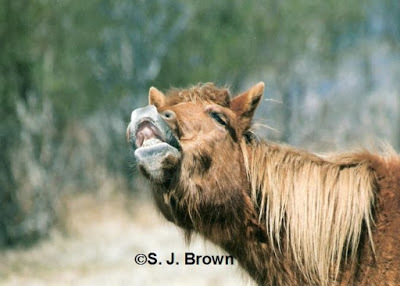
10. WHAT IS YOUR GREATEST ACHIEVEMENT?
I don't believe I've had a “Greatest Achievement. “ I have had several really good ones and I am working toward a few more.
11. WHAT ARE YOU WORKING ON AT THE MOMENT?
I am collaborating on a memoir with one of my sisters. I am also working on another book about photographing wildlife, and of course I am planning out my next photo trip.
12. WHAT IS YOUR FAVOURITE SUBJECT?
Wildlife or critters as I call them. Doesn't matter if they are large or small. If they will hold still for just a second I will capture them on film.
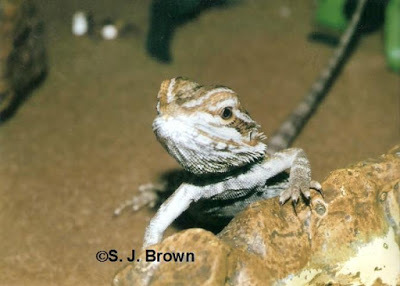
13. WHAT INSPIRES YOU? THINGS? PEOPLE?
Nature mostly. Being away from people and civilization, just enjoying the wild areas I visit.
14. DO YOU HAVE ANY TIPS FOR EMERGING PHOTOGRAPHERS?
Get out there an shoot. Keep shooting until your find yoursubject, then shoot some more.
If you are going to share your work on social media sites make sure your name is on it. Protect your work, people can and will steal your images.
Do the work when you get the images. You are a photographer, not a computer geek. To much digital editing retracts from the image.
Before you sign any contract read every word, even if it's 7 pages long.
15. WHAT IS THE MOST EXOTIC DESTINATION IN WHICH YOU HAVE WORKED?
I don't consider my destinations exotic. They are more out of the way, off the beaten path locations.
16. DO YOU HAVE A PREFERRED SCHEDULE?
Up early and in the field by sunrise. Shoot for a few hours, then take a break, get something to eat, then shoot some more.
17. DO YOU HAVE A FAVOURITE PLACE OR TIME TO PHOTOGRAPH?
My favorite place is where ever I am. It could be a Park, a Refuge, Preserve, Management area or back road. The peak times for wildlife are at sunrise and sunset.
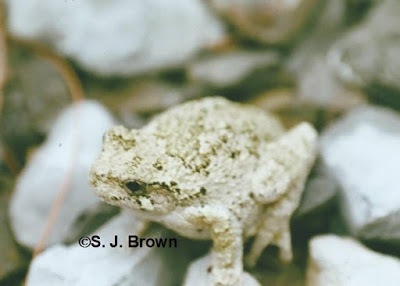
18. HAVE YOU DONE COMMERCIALS?
I did a commercial for my ceramic shop once. It was a 30 second commercial that took 3 hours to film.
I have also done a video for my Book Close Ups & Close Encounters. It is a series of clips from various locations set to music.
19. WHAT’S THE GREATEST COMPLIMENT YOU’VE EVER RECEIVED?
This pictures just makes me want to project him.
20. DESCRIBE THE FUNNIEST MOMENT YOU EXPERIENCED IN YOUR WORK?
I don't really have many funny moments. I experience some scary ones from time to time when a wild animal decides to show me who's the boss.
21. WHAT WAS THE WORST COMMENT YOU EVER RECEIVED?
I love your work but, it could be better if you shot digital.
22. WRITERS ARE SOMETIMES INFLUENCED BY THINGS THAT HAPPEN IN THEIR OWN LIVES. ARE YOU AS A PHOTOGRAPHER?
I'm not really sure how to answer this one. Conversations with people often lead to a new photo location or critter to capture on film.
23. HAVE YOU WON ANY PRIZES OR AWARDS?
I don't really enter contests. So I guess the answer would be no.
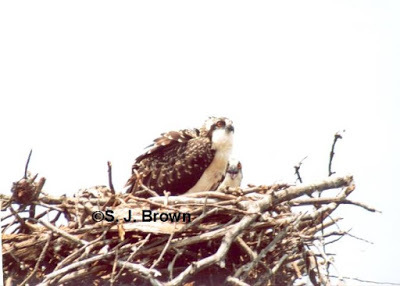
24. OTHER THAN PHOTOGRAPHY, WHAT ELSE DO YOU LOVE?
My family, my friends, and the natural world we all live in.
25. DESCRIBE YOUR PERFECT DAY.
Up with the sun, getting several good close up critter shots, lunch with hubby, then on to join up with family for dinner and an evening together.
26. WHAT ARE YOUR PLANS FOR THE FUTURE?
More field trips, more photos, another book, and a little bit of home remodeling.
27. IF YOU PUT TOGETHER A COLLECTION OF PHOTOGRAPHS FOR THE LEADERS OF THEWORLD, WHAT WOULD IT BE ABOUT?
Nature. I would include images of scenic wild places and some close up shots of wild life. Then I would put in a few images of the destruction of our natural lands. I would want them to realize every decision they make effects the natural world for generations.
28. WHAT IS YOUR GREATEST DREAM?
To make a difference. I know that sounds cliché, but I truly want to leave the world a better place than I found it. I have worked with scientist to help collect and record data on Monarch Butterflies and the milkweed they require to survive.
I have helped ban ducks in Minnesota. My hope is that all this information helps the scientific community in their quest to save wildlife.
I do presentations for school children and groups to help educate them about wildlife and our effects on them. I coordinated an earth day festival here in West Virginia to educate the community about nature. This event also brought together a variety of groups to show them we can all work together.
I want to do what I can to preserve our remaining wild lands and increase the appreciation for them. Then future generations can go out into the wild and explore, discover a variety of creatures and enjoy nature as I do.
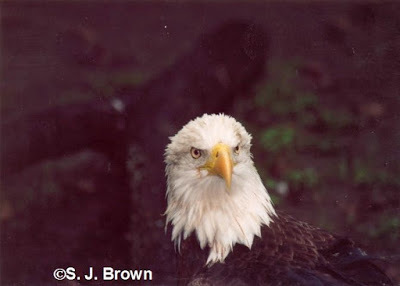
29. DO YOU PREFER COLOUR, BLACK AND WHITE OR SEPIA?
I'm all about Color.
30. WHY FILM INSTEAD OF DIGITAL?
It's a preference. The best way I can explain it is to compare 2 painters. One uses water colors while the other works with oils. It is a different image, a different medium. I just like the image you get from an actual photograph over a digital print.
31. HOW MANY COUNTRIES HAVE YOU VISITED TO TAKE PHOTOGRAPHS?
Just 2 the United States and Canada.
32. DO YOU PAY PEOPLE FOR PHOTOGRAPHS?
No, I don't photograph people.
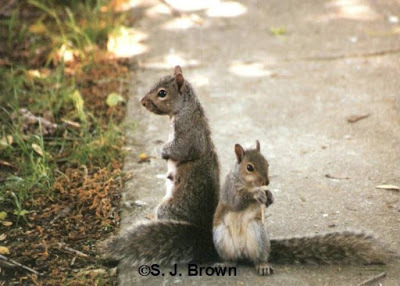
33. WHAT WAS YOUR MOST DIFFICULT PHOTOGRAPHIC ASSIGNMENT?
I don't do assignments. The most difficult thing about what I do is letting nature take it's course. Letting the predator have it's prey.
34. WHAT IS YOUR MOST DIFFICULT SUBJECT?
My most elusive subject is Red Wolves. There are very few of them left in the wild and they are painfully shy. I have tracked one, but I have never been able to photograph one in the wild.
35. WHAT’S NEXT FOR YOU?
I am always striving to get a better shot, better angle, a better image that sparks emotion.
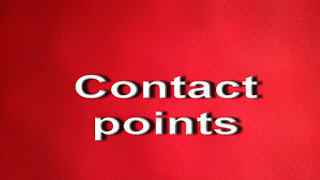
FACEBOOK:
https://www.facebook.com/sj.brown.3367
AMAZON

Clancy's comment: Thank you SJ. There you go, folks. Now, you have heard from a real wildlife photographer.
I'm ...


Published on September 10, 2015 03:21
September 9, 2015
10 September 2015 - WISE WORDS

WISE WORDS
G'day folks,Time for some more wise quips with a touch of humour to spark you up for the day.
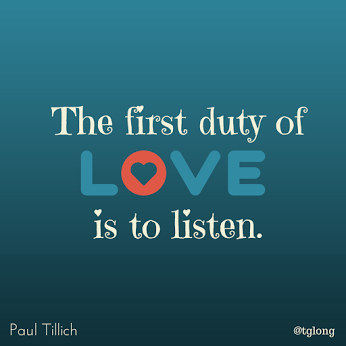

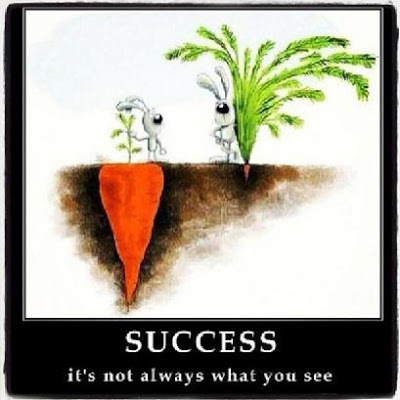

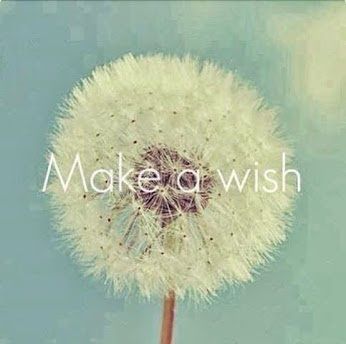
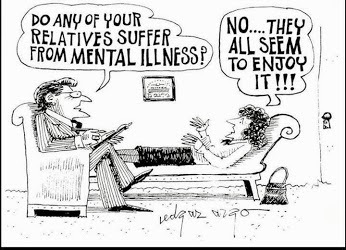
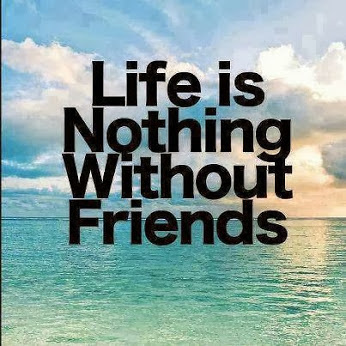
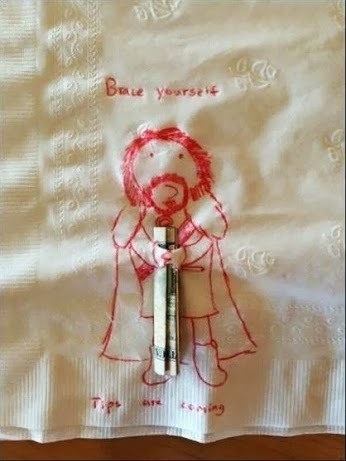
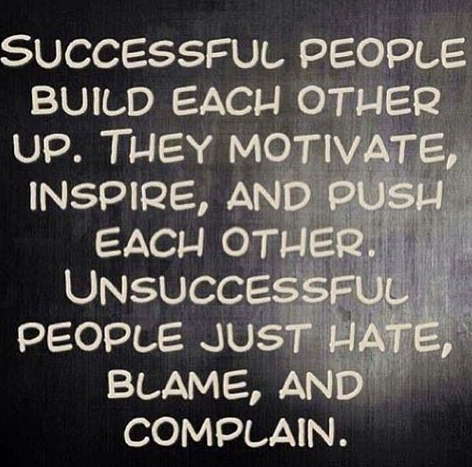

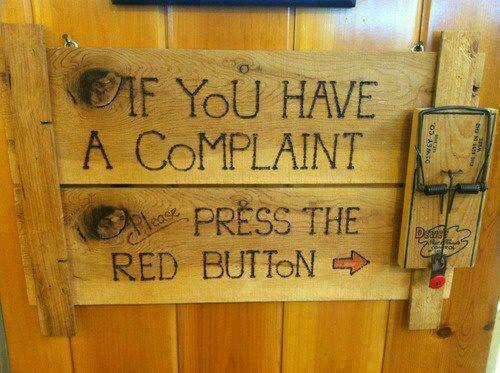
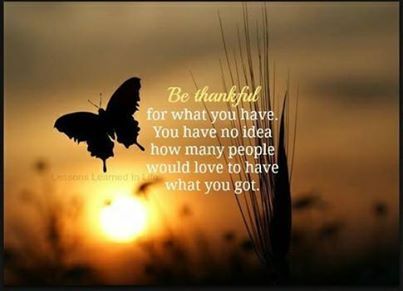

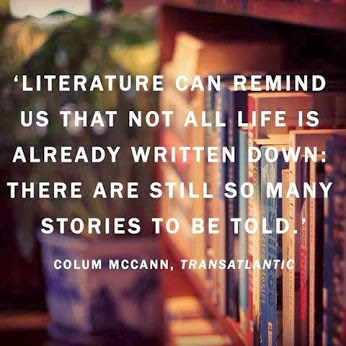
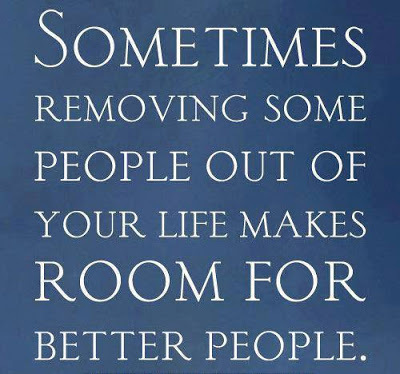
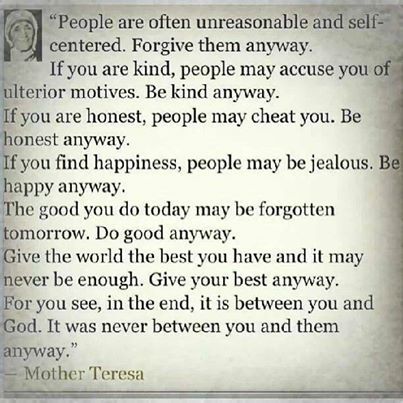
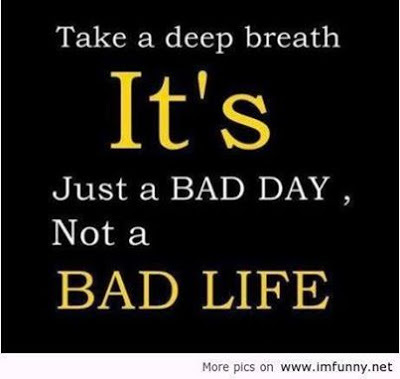
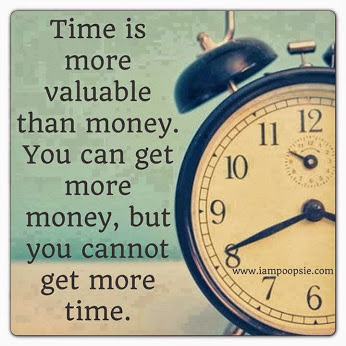
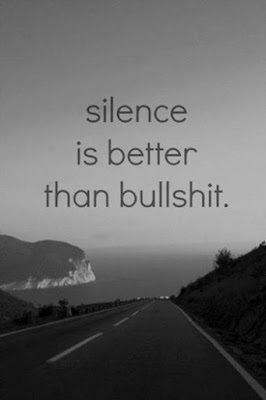
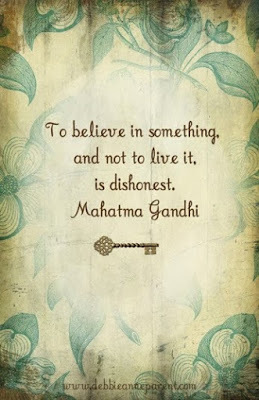



Clancy's comment: Well, there ya go, folks. Inspired?
I'm ...


Published on September 09, 2015 03:23
September 8, 2015
9 September 2015 - NAPOLEON BONAPARTE

NAPOLEON
BONAPARTE
G'day folks,
Here is one of the most famous general's of all time. Napoleon Bonaparte, (French: Napoléon Bonaparte ; 15 August 1769 – 5 May 1821) later known as Emperor Napoleon I, was a French military and political leader who is considered one of the most influential figures in European history.
Born in Corsica and trained as an artillery officer in mainland France, he rose to prominence under the First French Republic. He distinguished himself as a military commander fighting in Italy. In 1799, Bonaparte staged a coup d’état and installed himself as First Consul; five years later he crowned himself Emperor of the French. In the first decade of the Nineteenth Century, he turned the armies of the French Empire against every major European power and dominated continental Europe, through a series of military victories – epitomised in battles such as Austerlitz. He maintained France’s sphere of influence by the formation of extensive alliances and the appointment of friends and family members to rule other European countries as French client states. It appeared that through Napoleon’s tactical genius, nothing could stop the French as they won a series of military victories.
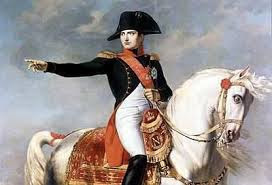
However, in 1812, the French invasion of Russia, led to a reversal of fortunes. His army succeeded in advancing to the outskirts of Moscow, but it was a hollow victory. The Russians had retreated into the interior, leaving a desolate and empty city. Cold and worn down with illness, his Grande Armée was forced into a long a painful retreat through the deep freeze of the Russian winter.
In 1813, the Sixth Coalition defeated his forces at Leipzig, and the following year the Coalition invaded France, forcing Napoleon to abdicate and making him an exile in the island of Elba. However, less than a year later, Napoleon escaped Elba and dramatically returned to power. After his escape, an army was sent by Louis XVIII to arrest Napoleon, but, Napoleon was able to sway his former army and they dramatically joined up with Napoleon. On returning to power, Louis XVIII fled and Napoleon regained power. Almost straight away, he set off to try and defeat the coalition forces ranged against him, led by the Duke of Wellington. Napoleon sought to drive a wedge between the British and their Prussian allies and set off in hot pursuit. It was at Waterloo, in June 1815, that the Duke of Wellington, decided to turn and fight Napoleon. The Battle of Waterloo was a close run affair, with the outcome uncertain at one stage. But, the arrival of the Prussian army helped to swing the battle against the French, and Napoleon was eventually decisively beaten and ousted from power.
Napoleon spent the last six years of his life under British supervision on the island of Saint Helena, where he died. His autopsy concluded he died of stomach cancer, though Sten Forshufvud and other scientists have since conjectured that he had been poisoned with arsenic.
Despite his military prowess and empire building, he was also conscious of a more spiritual perspective on life.
Napoleon scored major victories with a modernised French army and drew his tactics from different sources. His campaigns are studied at military academies the world over, and he is regarded as one of history’s great commanders. While considered a tyrant by his opponents, he is also remembered for the establishment of the Napoleonic code, which laid the administrative and judicial foundations for much of Western Europe.

Napoleon was a colossal figure of nineteenth century Europe. He had an unfettered conviction in his own destiny and that of Europe. He paved the way for a very impressive modern European Empire. In doing so, he swept away much of the old feudal systems and customs of Europe. Napoleon helped to usher in a new era of European politics. He established a Napoleonic code of religious tolerance, rational values and a degree of liberalism. Yet, he was a man of paradoxes, his naked ambition led to costly wars with 6 million dead across Europe. His liberalism and tolerance was imposed with ruthless efficiency and conquest of foreign lands. Sri Aurobindo later summed up the paradox of Napoleon by saying ‘Napoleon was the despotic defender of democracy.’ Eventually, his ambition outreached his ability, leading to his humiliation in the severe Russian winter and later against the British at Waterloo.
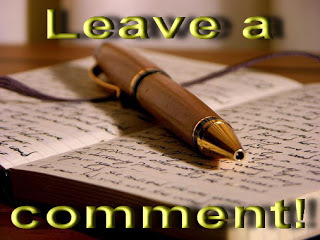
Clancy's comment: Another person who had an amazing life. Possibly died of arsenic? Wow.
I'm ...

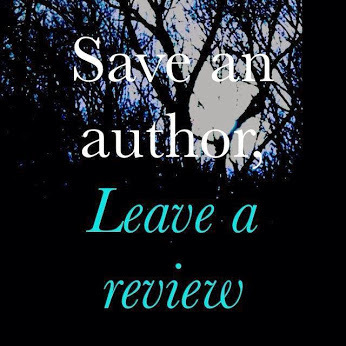
Published on September 08, 2015 04:11
September 7, 2015
8 September 2015 - VIENTIANE, LAOS

VIENTIANE LAOS
G'day folks,
Welcome to the capital of one of my favourite countries - LAOS.
Laos is a Southeast Asian country traversed by the Mekong River and known for its mountainous terrain, French colonial architecture, hill tribe settlements and Buddhist monasteries. Vientiane, the laid-back capital, is the site of That Luang, reportedly housing the Buddha’s breastbone, plus the Patuxai war memorial and Talat Sao (Morning Market), a shopping complex jammed with food, clothes and craft stalls.
Population: 6.7 million
VIENTIANE CAPITAL OVERVIEW
Located: on a curve of the Mekong River (Central Provinces)
Total area: 3,920 square kilometres
Population: 768,743
Capital of the province: Vientiane
Located on a curve of the Mekong River, Vientiane Capital has a recorded history that stretches back to around 1,000 AD. The area was originally settled because of the fertility of the surrounding alluvial plains, and Vientiane became the capital city of Laos around the mid-16thcentury.
Now, check out some photographs of this amazing place.
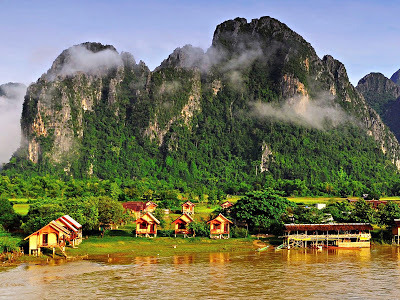
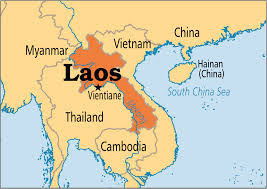

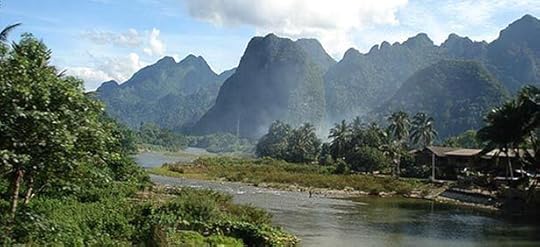


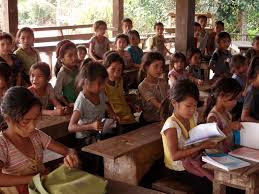


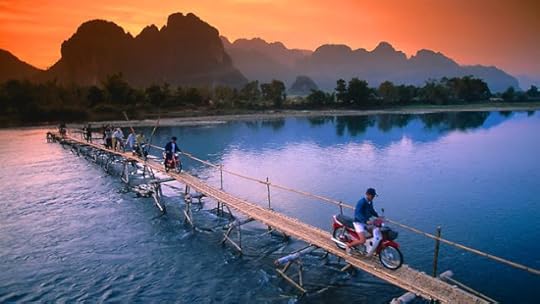




Clancy's comment: Yes, one of my favourite places. Great food, top people and extraordinary scenery.
I'm ...

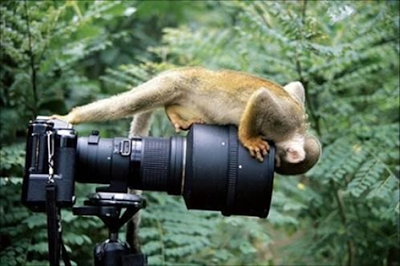
Published on September 07, 2015 04:20
September 6, 2015
7 September 2015 - WORLD REFUGEE DISASTER - AUSTRALIA, WHERE ARE YOU?
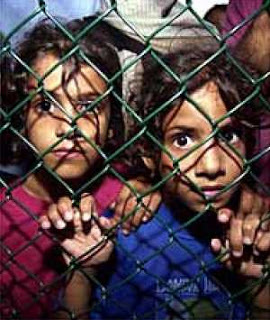
WORLD REFUGEE DISASTER -AUSTRALIA, WHERE ARE YOU?
G'day folks,
No doubt most of you have read harrowing stories of refugees flowing into Europe in recent days. Well, the subject of refugees fleeing to Australia, has been a hot topic in Australia for some years now. Sadly, both major parties are on the same page of a book that smacks of inhumane treatment and a pathetic attitude towards folks who deserve better.
CHECK OUT THESE FIGURES:
Australia has granted no more than 6501 refugee visas in each of the past two years.
Germany, as mentioned, could take in 800,000 this year alone.
Germany has a population four times larger than Australia.
Germany has a landmass 20 times smaller than ours.
Together, these two metrics mean that Germany is already a whopping 80 times more densely populated than Australia.
Yet while Australia begrudgingly accepts 6000 of the world’s poorest, most unfortunate souls each year — and repels or detains countless others — Germany has just offered the best part of a million of the world’s most needy people a permanent home.
Can you imagine if we upped our intake to even a fraction of Germany’s level? Wouldn’t happen. No government here would do it.
But Australian governments used to be very different in their approach to refugees. Very, very different.
Australia was not always so reluctant to take in asylum seekers. In fact we once welcomed them.
However, the government’s “full resources” nowadays go not into resettlement, but into offshore detention centres and the recent creation of a highly militaristic 6000-strong entity called Australian Border Force.
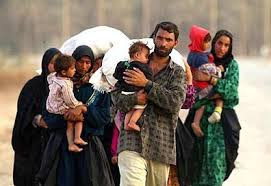
SO HOW DID WE GET FROM WELCOMING TO HOSTILE?
That’s a long and complex story. But a really interesting recent work goes a fair way towards explaining it.
Ben Doherty is an Australian reporter who just spent three months at Oxford University penning a lengthy but very readable essay which you can access here.
In it, he charts the changing language used in Australia’s debate over asylum seekers. As our language has changed, so has the way we think about asylum seekers.
Example. The moment we call an asylum seeker an “illegal” rather than a refugee, we perceive them as someone opportunistic, criminal even, rather than a victim of war or other misfortune whose life has been uprooted through no fault of their own.
As Doherty writes: “By constructing the debate as one of ‘national security’, or of ‘illegal’ activity, any alternative framework — asylum viewed through the prism of humanitarian obligation or of international legal commitment — is removed from public discourse.”
In other words we’ve shifted the goalposts. We talk about stopping the boats, not helping the people or doing our bit to help out with a global problem.
We dehumanise asylum seekers and banish them offshore at enormous taxpayer cost. Out of sight, out of mind. This is now the Australian way.
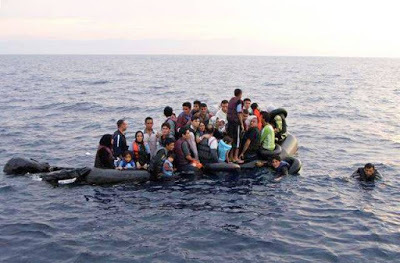
Importantly, this is not to pick on the current government or governments of any particular persuasion. As Doherty points out, both Labor and Coalition governments have played their part in hardening the language used in the asylum debate over the years. And both sides of government have behaved this way, Doherty argues, because the mood of the Australian people has dictated it. Good governments listen to their people, after all. The key question for Australia this week, after the slap-in-the-face reminder coming from Europe this week, is whether it’s time to change.
THE TRUE FACE OF REFUGEES
The full horror of the human tragedy unfolding on the shores of Europe was brought home on Wednesday as images of the lifeless body of a young boy – one of at least 12 Syrians who drowned attempting to reach the Greek island of Kos – encapsulated the extraordinary risks refugees are taking to reach the west.
The picture, taken on Wednesday morning, depicted the dark-haired toddler, wearing a bright-red T-shirt and shorts, washed up on a beach, lying face down in the surf not far from Turkey’s fashionable resort town of Bodrum.
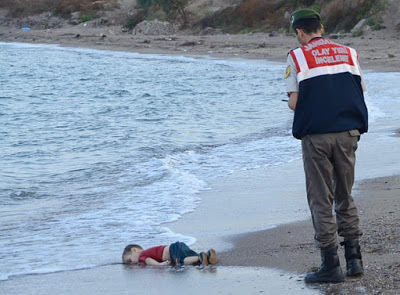
A second image portrays a grim-faced policeman carrying the tiny body away. Within hours it had gone viral becoming the top trending picture on Twitter under the hashtag #KiyiyaVuranInsanlik (humanity washed ashore).
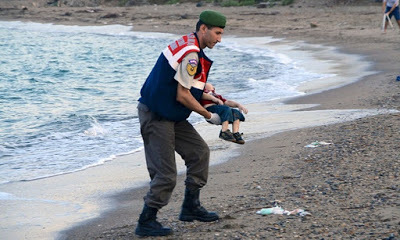
Turkish media identified the boy as three-year-old Aylan Kurdi and reported that his five-year-old brother had also met a similar death. Both had reportedly hailed from the northern Syrian town of Kobani, the site of fierce fightingbetween Islamic state insurgents and Kurdish forces earlier this year.
Justin Forsyth, CEO of Save the Children, said: “This tragic image of a little boy who’s lost his life fleeing Syriais shocking and is a reminder of the dangers children and families are taking in search of a better life. This child’s plight should concentrate minds and force the EU to come together and agree to a plan to tackle the refugee crisis.”
Greek authorities, coping with what has become the biggest migration crisis in living memory, said the boy was among a group of refugees escaping Islamic State in Syria.
Turkish officials, corroborating the reports, said 12 people died after two boats carrying a total of 23 people, capsized after setting off separately from the Akyarlar area of the Bodrum peninsula. Among the dead were five children and a woman. Seven others were rescued and two reached the shore in lifejackets but hopes were fading of saving the two people still missing.
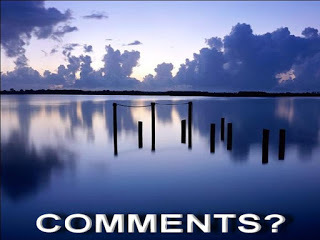
Clancy's comment: This is what I wrote on Facebook yesterday when I saw that picture of the boy on the beach, "I have two spare bedrooms, fresh air and a great community. All I have is available to a desperate family - NOW!"
Sure, this is not an easy problem to fix. However, as an Australian who has taken a keen interest in the history and political machinations of my country, I can say one thing: AUSTRALIA CAN DO A LOT BETTER THAN IT IS CURRENTLY DOING. Anyone who reads this blog knows that I am an outspoken advocate for kids - Kids anywhere in the world.
How obscene it is that we as a nation throw millions of dollars at sports men and women, yet we turn a blind eye when it comes to humanity. What a bloody disgrace!
Anyone wishing to sign a petition to crank up and shame my government can do so here:

CALL AUSTRALIA HOME
I'm ...

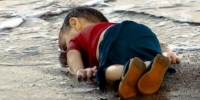 R.I.P Aylan Kurdi
R.I.P Aylan Kurdi 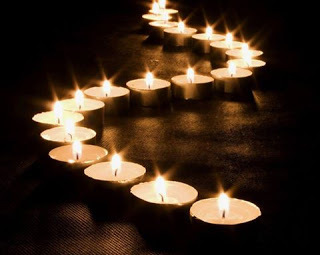
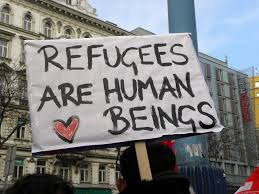
Published on September 06, 2015 03:34
September 5, 2015
6 September 2015 - SEVEN MODERN WONDERS OF THE WORLD

SEVEN MODERN WONDERSOF THE WORLD
G'day folks,
People have put together many lists of the seven ancient wonders of the world. But this “seven wonders” list celebrates monumental engineering and construction feats of the 20th century. It was chosen by the American Society of Civil Engineers.
Empire State Building.
Finished in 1931, it towers 1,250 ft over New York City. Until the first tower of the World Trade Center was finished in 1972, it was the world's tallest building.
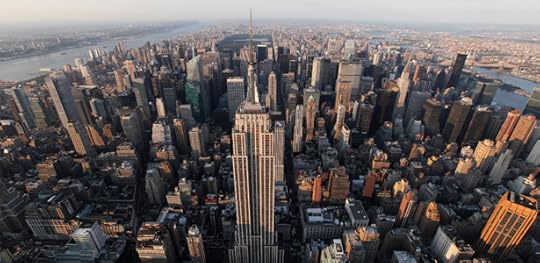
Itaipu Dam.
Built by Brazil and Paraguay on the Paraná River, the dam is the world's largest hydroelectric power plant. Completed in 1991, it took 16 years to build this series of dams whose length totals 7,744 m. It used 15 times more concrete than the Channel Tunnel.
CN Tower.
In 1976, the tower became the world's tallest freestanding structure. It looms about one-third of a mile high (1,815 ft) above Toronto, Canada. A glass floor on the observation deck lets you look 342 m down to the ground.
Panama Canal.
It took 34 years to create this 50-mile-long canal across the Isthmus of Panama. The amount of digging required and the size of its locks helped make it the most expensive project in American history at that time—and the most deadly: About 80,000 people died during construction (most from disease).
Channel Tunnel.
Known as the Chunnel, it links France and England. It is 31 mi long, and 23 of those miles are 150 ft beneath the seabed of the English Channel. High-speed trains whiz through its side-by-side tubes.

Netherlands North Sea Protection Works.
Because the Netherlands is below sea level, a series of dams, floodgates, and surge barriers have been built to keep the sea from flooding the country during storms. The biggest part of the project was a two-mile-long moveable surge barrier across an estuary finished in 1986. It is made of 65 concrete piers each weighing 18,000 tons. It has been said that the project is nearly equal in scale to the Great Wall of China.
Golden Gate Bridge. Connecting San Francisco and Marin County in 1937, for many years this was the longest suspension bridge in world. Experts thought that winds, ocean currents, and fog would make it impossible to build. It took about four years to complete the beautiful 1.2-mile-long bridge. It is held by 80,000 mi worth of steel wire, and the cables that link the two towers are 36.5 inches in diameter—the biggest ever made.
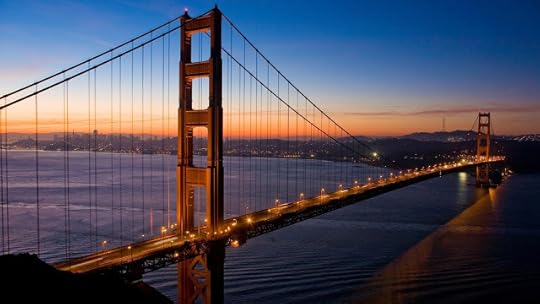

Clancy's comment: I'm sure there are other constructions we can include on this list.
I'm ...

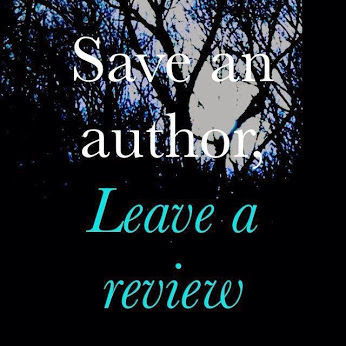
Published on September 05, 2015 05:44
September 4, 2015
5 September 2015 - OOOPS!
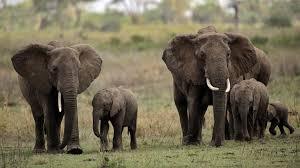
OOOPS!
G'day folks,
Here is a pictorial display about a big bully. Wildlife guide Conrad Cramer was at the Addo Elephant National Park in South Africa when he came across a baby elephant lifting his head and flaring his ears at a full-grown African Buffalo.
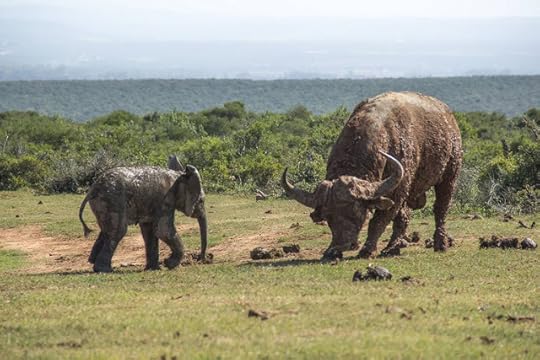

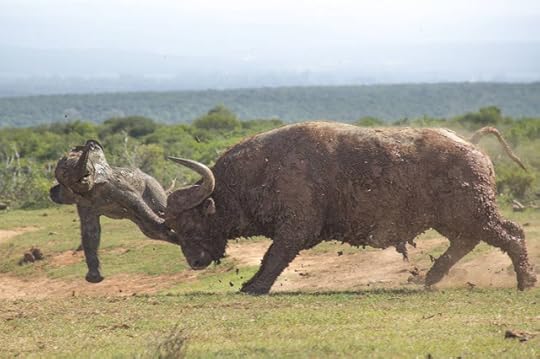
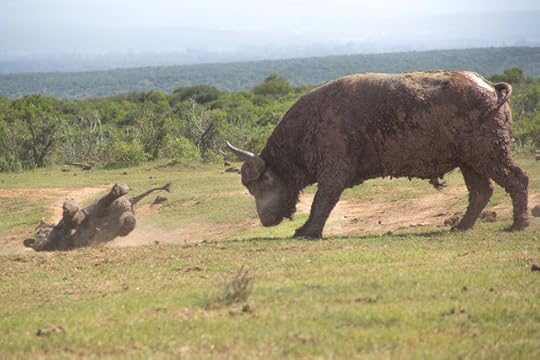
Luckily, the calf walked away with nothing more than damaged pride. And according to Cramer, even the elephant's relatives agreed that the buffalo was in the right.
"The other elephants were in no way disturbed by the chain of events," Cramer said, adding that they viewed the altercation as a "life lesson that the youngster had to learn."

Clancy's comment: Wow. Poor little guy. It could have been much worse I guess.
I'm ...

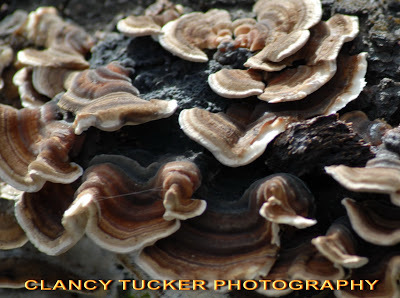
Published on September 04, 2015 04:02
September 3, 2015
4 September 2015 - SIR ARTHUR CONAN DOYLE
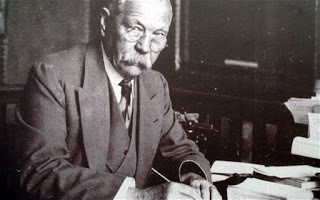
SIR ARTHUR CONAN DOYLE 22 May 1859 – 7 July 1930
G'day folks,
Sir Arthur Ignatius Conan Doyle KStJ, DL was a Scottish writer and physician, most noted for his fictional stories about the detective Sherlock Holmes, which are generally considered milestones in the field of crime fiction.
“I should dearly love that the world should be ever so little better for my presence. Even on this small stage we have our two sides, and something might be done by throwing all one’s weight on the scale of breadth, tolerance, charity, temperance, peace, and kindliness to man and beast. We can’t all strike very big blows, and even the little ones count for something. “
– Sir Arthur Conan Doyle (1894)
Sir Arthur Conan Doyle was born in Picardy Place, Edinburgh, Scotland in 1859. At school he developed a talent for story telling in the dormitories after lights. He nursed ambitions to become a well established writer – especially in the historical novel field. However, from 1876 to 1881, he studied medicine at the University of Edinburgh; he trained as a doctor and later set up a medical practice in Plymouth and later Portsmouth.
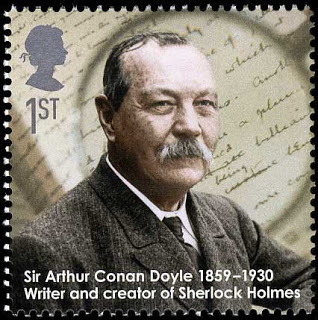
After his father’s death, the burden of supporting a large family fell on Arthur Conan Doyle. To supplement his income he began writing short stories. His first story of note was A Study in Scarlet published in the Beeton’s Christmas Annual 1887 (featuring a first appearance of Sherlock Holmes. This later led to a contract writing more Sherlock Holmes stories for the Strand magazine. It was in these early stories that he developed the character of Sherlock Holmes. It was a character that fascinated the reading public and he soon became one of the best loved fictional characters. Sherlock Holmes always had an element of mystery – the sharpest mind and his unbelievable powers of observation.
He also had his share of human weaknesses such as smoking and drug addiction. His partner, the sensible loyal Watson proved the ideal counterbalance to the highly strung genius of Holmes.
The success of Sherlock Holmes enabled Conan Doyle to retire from his medical profession and become a full-time writer. But, it was not the popular Sherlock Holmes stories which inspired him the most. He was more interested in writing a serious historical novel and becoming known as a famous writer in this genre. However, his historical novels never brought him the same financial remuneration or fame as his Sherlock Holmes stories did. After a while, Doyle became increasingly frustrated with the public’s obsession with Holmes, at a time when he was growing weary of the stories. Therefore, he decided to retire Holmes in 1893 by having him plunge into a ravine with his arch enemy Professor Moriarty. Holmes hoped this would give him more time to write his ‘serious novels’ – but, much to his frustration, he struggled to escape the public’s perception of him as the creator of Holmes. In fact it wasn’t uncommon for members of the public to equate Conan Doyle with Sherlock Holmes – much to his annoyance.
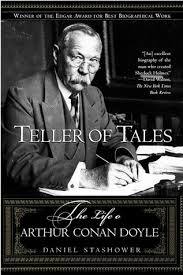
In 1900, Conan Doyle served in a field hospital in the Boer war. He also later published a pamphlet The War in South Africa: Its Cause and Conduct, which sought to justify British actions in the unpopular Boer war. For his services in the war he was knighted, though undoubtedly his fame as creator of Sherlock Holmes was also a factor.
In, 1906, his first wife, Louisa Hawkins, died after a long battle with Tuberculosis. It was a big blow to Conan Doyle who had moved to Switzerland to help her health.
After getting married to his second wife, Denise Steward a year later, he again was in the need for more money to finance a lavish new family home. Again, Doyle turned to his ever-profitable Holmes, securing a great deal with an American publisher for more Holmes stories. Thus, Holmes was resurrected, Conan Doyle cleverly wrote that Holmes had never died in the fall but cunningly escaped Moriarty and had gone into hiding from his enemies.

Conan Doyle’s most famous character was a man of great reason and science, so it was perhaps ironical that Conan Doyle was to become greatly interested in the new religion of spiritualism. A large part of spiritualism was the contacting of deceased relatives through seances. For many years, Conan Doyle, had toyed with the ideas, but the traumatic years of the First World War (where he lost a brother and son) changed his outlook to that of fervent believer. Conan Doyle became one of the chief proponents and public faces for spiritualism.
The success of Conan Doyle’s Holmes enabled him to pursue many different interests. As well, as researching spiritualism, Conan Doyle found time to fight miscarriages of justice such as the George Edalji case.
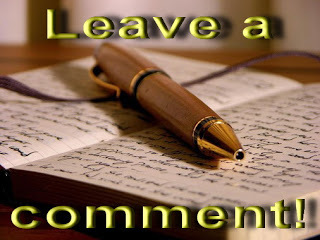
Clancy's comment: An interesting life, eh?
I'm ...

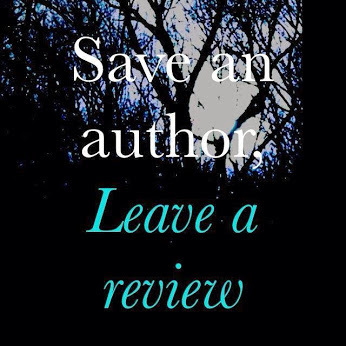
Published on September 03, 2015 06:38
September 2, 2015
3 September 2015 - ADAM WALLACE - Guest Author

ADAM WALLACE
- Guest Author -
G'day folks,
Welcome to an interview I conducted with a prolific Aussie author who has a crazy sense of humour.
Welcome, Adam ...
1. TELL US A LITTLE ABOUT YOURSELF AND YOUR WRITING JOURNEY. Well, it all began with my parents, whose names are Jack and Gill!!! What choice did I have but to become a writer … or a pail of water, I guess, but that would have made me all wrinkly. Writing keeps my skin smooth!
2. WHEN AND HOW DID YOU BECOME A WRITER? As soon as I put those words down. This is a step lots of people never get to. ‘Oh, I could write a book!’ or ‘I have so many ideas for stories.’ Until you put them down, I don’t care … I mean, they’re nice to listen to, but that’s it. But for me, it really clicked when I wrote my first children’s book as an adult, and it felt like home.
3. WHAT TYPE OF PREPARATION DO YOU DO FOR A MANUSCRIPT? DO YOU PLAN EVERYTHING FIRST OR JUST SHOOT FROM THE HIP? Pretty much shoot from the hip, especially when writing a western. I do like to have my character in mind, and my ending, and sometimes the theme as well, but that’s about it. I do a lot of my planning after the first draft is written, which sounds weird, but I find if I get it all out first, I have something to really work with.
4. WHAT DO YOU ENJOY MOST ABOUT BEING A WRITER? The writing! I love it! I also really enjoy doing presentations, and seeing the reaction to my books in person. I love getting messages from parents who say their children hardly read but have read my book three times, and I love seeing children who think they can’t draw being able to create a really cool picture with my help.

5. WHAT IS THE HARDEST THING ABOUT BEING A WRITER? The computer screen when I head-butt it in frustration … that and having an idea I really, really love, but being unable to find a style or place for it in a story. AAAGGGHHHH! Now I’m thinking about a time that happened! NOOOOOOOOO!
6. WHAT WERE YOU IN A PAST LIFE, BEFORE YOU BECAME A WRITER? In my first past life, I was King of a small island just south of Brazil. Then I was an engineer, I qualified to become a primary school teacher, and then writing … I won’t bore you with the twenty or so other jobs I’ve had!
7. WHAT IS YOUR GREATEST WRITING ACHIEVEMENT? Finishing my first story. Throwing out my first story. Writing a better first story!
8. WHAT ARE YOU WORKING ON AT THE MOMENT? I am illustrating a book about a vegetarian zombie, I’m writing a YA novel, the first in a trilogy, about a teen assassin, and I have just started rewriting a chapter book that will also lead into other multi-media areas as well. So lots!
9. WHAT INSPIRES YOU? People who are continually looking at improving themselves, who invest in themselves, who have dreams and who aren’t afraid to go for those dreams, regardless of the naysayers. Oh, and Collingwood.
10. WHAT GENRE DO YOU WRITE? I write for children, and I guess my genre would be humour. Is that a genre? I don’t know. I have done chapter books and novels and picture books and how to draw books, are they genres? I’m not good with labels, I only just found out what nouns and verbs are!
11. DO YOU HAVE ANY TIPS FOR NEW WRITERS? Write! Write write write write write and then write some more. Read just as much, and ask questions of people whose writing you admire. They were right where you are when they started, and authors are brilliant for sharing advice and thoughts on writing. Also write what you love writing about, in a style you love, not what you think you should write. That’s blah blah! You have to enjoy what you write, otherwise I don’t see the point.
12. DO YOU SUFFER FROM WRITER’S BLOCK? Sometimes, although never seriously. I think it really helps to have a few projects on the go at once, or at least two. That way, if you get stuck on one thing, you have the other you can get stuck in to. I have never been stuck on more than one project at once, I think they feed each other.
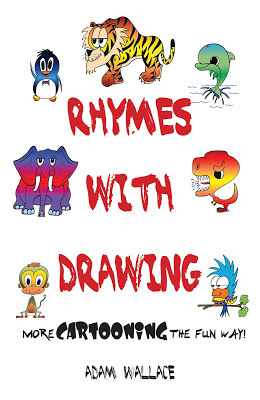
13. DO YOU HAVE A PREFERRED WRITING SCHEDULE? I like to write in the morning, before the sun rises. That’s because I’m a vampire, and also because it’s when I am ready to go. I also think that if I write in the morning, I know I’ve done something, so when the afternoon rolls around, if I get an urge to write I will, but I don’t have to. If I haven’t written in the morning and the afternoon rolls around, then the pressure builds … and builds … and builds … can you feel it? It’s about to explode!
14. DO YOU HAVE A FAVOURITE WRITING PLACE? I write anywhere. I mostly write at my desk, because that’s where my computer is, but my favourite place so far was on the balcony of an apartment in Palm Cove. Mmmmm … Palm Cove.
15. WHAT IS YOUR GREATEST JOY IN WRITING? Writing something that makes me laugh, or cry. That way I know that I have been real, and being real when writing fiction isn’t an easy thing to do. But I know if I have honestly expressed myself on the page, it will come across and get a reaction out of me. And if it does that to me, there’s a chance it will do it to other people as well, and that’s when I know I’ve done something worthwhile.
16. WHO IS YOUR FAVOURITE AUTHOR AND WHY? My favourite author is Harpo Marx, and he only wrote one book, his autobiography, but that book is my all-time favourite book ever!
17. WHAT’S THE GREATEST COMPLIMENT YOU EVER RECEIVED FROM A READER? Well, aside from parents saying their kids liked my books, it would be the one who said, ‘You’re way better than Andy Griffiths!’ Ha!!! Take that, Griffiths! In your face!Note: I’m just kidding, Andy, please don’t be mad at me … it was actually only the greatest compliment because you’re the greatest. Ever. In the entire world.
18. WHAT WAS THE WORST COMMENT FROM A READER? Well it was actually from a publisher, do they count? They said that one of my characters was totally annoying. That’s fair enough, except the character was based on me!!!
19. WRITERS ARE SOMETIMES INFLUENCED BY THINGS THAT HAPPEN IN THEIR OWN LIVES. ARE YOU? Totally! I’m influenced by events in my life, by my family, by things people do, by things I see, by songs on the radio, by sounds, by kids in the park being funny, by everything. Ideas are everywhere, we just always need our net out to catch them as they fly by.
20. OTHER THAN WRITING, WHAT ELSE DO YOU LOVE? I love going to live music and live comedy. I love playing golf. I love taking a siesta with the sun coming through the window onto my back. I love laughing until I cry. I love the feeling you get when you’re busting to go to the toilet and you just make it there on time. Okay, that’s enough now.
21. DID YOU HAVE YOUR BOOK / BOOKS PROFESSIONALLY EDITED BEFORE PUBLICATION? With my first book, which I self-published, no I didn’t, as I was pretty budgeted. However all my books through publishers have been professionally edited. My self-published ones are edited by a fictional character called Tex. He’s pretty awesome. I like him.
22. DESCRIBE YOUR PERFECT DAY. Up at 6, meditate, visualise. Have breakfast while reading about Collingwood’s win the day/night before. Write for a couple of hours, aim for a chapter or a number of words. Play a round of golf and shoot under par. Back for an afternoon nap. Be inspired, write some more. Catch up with friends for coffee or dinner. Maybe take in an episode of the IT Crowd, and then fall into bed.
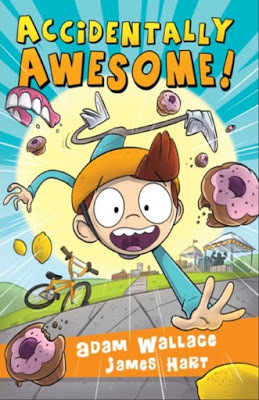
23. IF YOU WERE STUCK ON A DESERT ISLAND WITH ONE PERSON, WHO WOULD IT BE? WHY? My wife, because she’s funny and she’s a psychologist, so she could talk me down when I start going crazy and try to cook and eat her.
24. WHAT WOULD YOU SAY IF YOU HAD THE CHANCE TO SPEAK TO WORLD LEADERS? ‘Nice to meet you.’ They have enough people telling them what they should be doing.
25. WHAT ARE YOUR PLANS FOR THE FUTURE? To write as many awesome books as I can. To see a TV show I wrote being broadcast around the world. To meet Adam Sandler.
26. WHAT FIVE BOOKS WOULD YOU TAKE TO HEAVEN? Harpo Speaks. The Tipping Point. Stargirl. The 13 Story Treehouse. Accidentally Awesome (just in case someone there wants a signed copy).
27. DO YOU SEE YOURSELF IN ANY OF YOUR CHARACTERS? TOTALLY!!!!!!!!!!!!!!!!!!
28. DOES THE PUBLISHING INDUSTRY FRUSTRATE YOU? Yes, because my masterpiece was rejected!!! Sigh!!! Seriously though, it does frustrate me a little, but only because it can feel like the authors and illustrators, the creators of the work, can be at the bottom of the pile. It is also quite a slow industry, but at the same time it is a massively rewarding and exciting one. Once you accept that you are going to have to get out there and do some legwork yourself, I think it is easier to accept some of the other things that go on.
29. DID YOU EVER THINK OF QUITTING? Not really. I had already quit writing after I left high school, and when I restarted I knew that I loved it and that I was going to write in my style and that eventually the rest of the world would jump on the bandwagon.
30. WHAT WAS YOUR FAVOURITE MANUSCRIPT TO WRITE? WHY? I think it was The Incredible Journey of Pete McGee. I don’t know why, but it felt like a little bit of magic happened when I wrote that, and I could totally see it in my head as a movie. That has only happened twice since (in the two sequels), so it was pretty awesome.
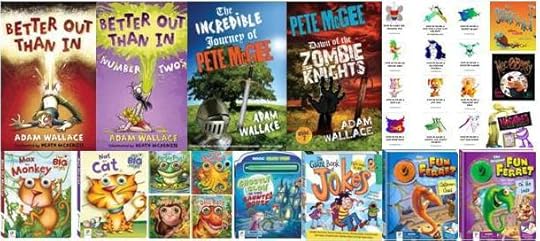
31. HOW WOULD YOU DEFINE ‘SUCCESS’ AS A WRITER. Being true to yourself when you write. Getting your writing as good as it can possibly be. Loving the time you spend writing.
32. WHAT SHOULD READERS WALK AWAY FROM YOUR BOOKS KNOWING? HOW SHOULD THEY FEEL? They should walk away knowing which direction their home is, because otherwise they’ll get lost and may end up in a paddock somewhere. They should feel like they’ve been able to escape the real world and that they’ve been part of a new world, and they should have sore sides from laughing.
33. HOW MUCH THOUGHT GOES INTO DESIGNING A BOOK COVER? It can vary. Some of my books have quite simple covers, because I want to get a message across quickly (ie what pictures you will learn to draw when you read the book). Basically, I like my cover to quickly and easily convey what the book is like. The feel, really. So a funny book? I want a funny cover. Okay, so no, not a lot of thought. Just make it funny!
34. WHAT’S YOUR ULTIMATE DREAM? I turn up to school without any clothes on and I … oh, you don’t mean that sort of dream, do you? Okay then. To be writing full-time without having to focus so much on the selling, of both my books and myself. And maybe have a house where there is a lake that has a little island in the middle of it.
35. WRITING IS ONE THING. WHAT ABOUT MARKETING YOU, YOUR BOOKS AND YOUR BRAND? ANY THOUGHTS? You have to do it! No matter if you publish yourself or are published, you have to be out there. People have to know who you are, and who your books are. What your books are? I don’t know. You have to build a brand around yourself and your books. It’s a crowded marketplace. You have to find a way to stand out and be noticed.
36. ARE YOUR BOOKS SELF-PUBLISHED? Yes and no. I have self-published books and I have traditionally published books. I was going to say something else to add to that, but really that sums it up!
37. DESCRIBE YOURSELF IN FIVE WORDS. Have a huge big toe. (Dammit, used up all my words on that one!)
38. WHAT PISSES YOU OFF MOST? When I do something really stupid, usually when trying to impress someone.
39. WHAT IS THE TITLE OF THE LAST BOOK YOU READ? GOOD ONE? Last book I read, am reading, is called Husband Hunters, by Genevieve Gannon. It is good! She’s the daughter of a friend and it’s her first book, so I’m reading it and it’s good! It’s a romance, but it’s funny too.
40. WHAT WOULD BE THE VERY LAST SENTENCE YOU’D WRITE? No, I can’t die now, I’m about to write my greatest sentence everrrrrrrrrrrrrrrr (that was me slumping on the keyboard. I wasn’t being a pirate).

41. WHAT WOULD MAKE YOU HAPPIER THAN YOU ARE NOW? CARE TO SHARE? Nope, mwwaawwhahahahahahahaha!
42. ANYTHING YOU’D LIKE TO ADD? 197 and 234. It equals 431.
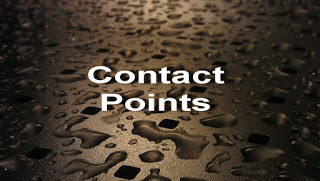
WEBSITE
YOUTUBE
RANDOM SITE

Clancy's comment: I told you he had a crazy sense of humour. Well done, Adam. Keep pumping those books out.
I'm ...


Published on September 02, 2015 04:27
September 1, 2015
2 September 2015 - HISTORICAL EVENTS ON THIS DAY

HISTORICAL EVENTSON THIS DAYG'day folks,
Welcome to a reflection on those events that occurred on this day.
44 BC - Queen Cleopatra VII of Egypt declares her son co-ruler as Ptolemy XV Caesarion.
44 BC - The first of Cicero's Philippics (oratorical attacks) on Mark Antony. He will make 14 of them over the next several months.
31 BC - Final war of the Roman Republic: Battle of Actium - off the western coast of Greece, forces of Octavian defeat troops under Mark Antony and Cleopatra.
911 - Viking-monarch Oleg of Kiev-Russia signs treaty with Byzantines
1192 - Ottoman Sultan Saladin & King Richard the Lion-hearted of England sign treaty over Jerusalem, at end of the Third Crusade
1519 - 1st Battle of Tehuacingo, San Salvador vs Mexico
1537 - King Christian III publishes "Ordinance on the Danish Church"
1644 - , Cornwall: Robert Devereux's infantry surrenders
1649 - The Italian city of Castro is completely destroyed by the forces of Pope Innocent X, ending the Wars of Castro.
1666 - Great Fire of London begins at 2am in Pudding Lane, 80% of London is destroyed
1686 - Habsburg armies take Buda from Turks
1732 - Pope Clement XII renews anti-Jewish laws of Rome
Saladin 1743 - Britain/Austria/Savoye-Sardinia sign Treaty of Worms
1752 - Last Julian calendar day in Britain and British colonies (no Sept 3-Sept 13th)
1789 - US Treasury Department established by Congress
1792 - September Massacres of the French Revolution: In Paris rampaging mobs slaughter 3 Roman Catholic bishops, more than two hundred priests, and prisoners believed to be royalist sympathizers.

1796 - Jews of the Netherlands are emancipated
1806 - A side of Rossberg Peak collapses into Goldau Valley Switz, kills 500
1807 - The Royal Navy bombards Copenhagen with fire bombs and phosphorus rockets to prevent Denmark from surrendering its fleet to Napoleon.
1839 - Salon of Varietes opens in Amsterdam
1856 - Tianjing's struggle Incident in Nanjing, China.
1859 - Gas lighting introduced to Hawaii
French Emperor Napoléon Bonaparte 1859 - A solar super storm affects electrical telegraph service.
1864 - Union General William T. Sherman captures and burns Atlanta during US Civil War
1867 - 1st Girl School opens in Haarlem Neth
1870 - Napoleon III surrenders to Prussian armies
1882 - 2nd U.S. National Championship: Richard Sears beats Clarence M. Clark (6-1, 6-4, 6-0)
1885 - In Rock Springs, Wyoming, 150 white miners, who were struggling to unionize so they could strike for better wages and work conditions, attack their Chinese fellow workers, killing 28, wounding 15, and forcing several hundred more out of town.
1894 - -3] Amsterdam Municipal theater opens
1894 - Forest fires destroy Hinckley Minnesota: about 600 die
1897 - "McCal" magazine first published
Union General William Tecumseh Sherman 1898 - Battle of Omdurman: Lord Kitchener retakes Sudan for Britain
1898 - Machine gun 1st used in battle
1900 - Telegraph use between Germany & US begins
1900 - A large demonstration by Nationalists in Dublin's Phoenix Park demand that Ireland be free of British rule
1901 - VP Theodore Roosevelt advises "Speak softly & carry a big stick"
1902 - "A Trip To The Moon", the first science fiction film, released
1908 - Tommy Burns KOs Bill Lang in 6 for heavyweight boxing title
1909 - King Edward VII signs South Africa Act
1911 - Joao Chagas forms Portuguese government
1913 - Amsterdam reroutes sewage of canals to South Seas
1914 - -3] Gen von Hausen & countess of France regime flees to Bordeaux
1914 - The US Treasury Department establishes the Bureau of War Risk Insurance to provide up to $5 million worth of insurance for merchant ships and their crews
Boxer and World Heavyweight Champion Tommy Burns 1917 - Deutsche Vaterlands Partei formed by admiral Tirpitz
1919 - Communist Party of America organizes in Chicago
1919 - Italy agress to general voting right/proportional representation
1919 - National Commission recommends a best-of-9 World Series
1920 - W Somerset Maugham's "East of Suez" premieres in London

1922 - President Ebert declares "Deutschland uber alas" as German national anthem
1924 - 44th US Men's Tennis: William Tilden beats William Johnston (6-1 9-7 6-2)
1924 - Rudolf Friml's "Rose Marie" opens to rave reviews in NYC
1924 - 44th U.S. National Championship: Bill Tilden beats Bill Johnston (6-1, 9-7, 6-2)
1926 - Italy signs treaty with Yemen
1927 - Rumour starts that Yankee Lou Gehrig will be traded to Tigers
Baseball Player Lou Gehrig 1929 - Unilever forms by merger of Margarine Union & Lever Bros
1929 - WOR (NYC) ends affiliation with CBS radio network
1930 - 1st non-stop airplane flight from Europe to US (37 hrs)
1935 - A hurricane slams Florida Keys killing 423
1936 - 1st transatlantic round-trip air flight
1937 - US Housing Authority created by National Housing Act
1940 - 23rd PGA Championship: Byron Nelson at Hershey CC Hershey Pa
1940 - Great Smoky Mountains National Park dedicated
1941 - Academy copyrights Oscar statuette
1942 - German troops enter Stalingrad
1944 - Belgium's Emissie bank closes
1944 - During WW II, George H W Bush ejects from a burning plane
1944 - Holocaust diarist Anne Frank was sent to Auschwitz
Jewish Victim & Diarist of the Holocaust Anne Frank 1944 - US leaders meet in Belgium
1945 - 59th US Womens Tennis: Sarah P Cooke beats Pauline Betz (3-6 8-6 6-4)
1945 - Ho Chi Minh declares Vietnam independence from France (National Day)
1945 - V-J Day; formal surrender of Japan aboard USS Missouri (WW II ends)
1946 - Johnny Neun replaces Bill Dickey as Yankee manager
1946 - Nehru forms government in India
1949 - Fire in riverfront area kills 1,700 (Chungking China)
1951 - Australia, NZ & US sign ANZUS-pact
1952 - Dr Floyd J Lewis 1st uses deep freeze technique in heart surgery
1954 - Hurricane Edna batters NE US, killing 20
1954 - WTVD TV channel 11 in Raleigh-Durham, NC (ABC) begins broadcasting
1955 - KCRA TV channel 3 in Sacramento, CA (NBC) begins broadcasting
1956 - Collapse of a rail bridge under a train kills 120 (India)
1956 - Orioles trailing Red Sox 8-0 come back to win 11-10 in 9 innings
Vietnamese Communist Revolutionary Ho Chi Minh 1956 -Washington-Jackson cable line replaced by bus service
1956 - 7th Formula One WDC: Juan Manuel Fangio wins by three points
1957 - 1st edition newspaper the Ware Time (in Suriname), 1,700 die
1957 - Milwaukee Braves' Frank Torre scores 6 runs in 1 game
1957 - US performs nuclear test at Nevada Test Site
1958 - Great Britain performs atmospheric nuclear test at Christmas Island
1958 - Hendrik Verwoerd appointed PM of South Africa
1958 - KAYS TV channel 7 in Hays, KS (CBS) begins broadcasting
1958 - Minn announces $9 million bond issue to improve Metropolitan Stadium
1958 - National Defense Education Act was signed
1958 - U.S. Air Force C-130A-II is shot down by fighters over Yerevan, Armenia when it strays into Soviet airspace while conducting a sigint mission. All crew lost.
1959 - US President Eisenhower arrives in Paris

34th US President & WWII General Dwight D. Eisenhower 1960 - Tamara & Irina Press (USSR) become 1st sisters to win olympic gold
1960 - William Walton's 2nd Symphony, premieres
1960 - The first election of the Parliament of the Central Tibetan Administration, in history of Tibet. The Tibetan community observes this date as the Democracy Day.
1962 - Stan Musial's 3,516th hit moves over Tris Speaker into 2nd place
1962 - USSR performs nuclear test at Novaya Zemlya USSR
1963 - Alabama Gov George C Wallace prevents integration of Tuskegee HS
1963 - CBS & NBC expand network news from 15 to 30 minutes
1963 - Mickey Wright wins LPGA Idaho Centennia Golf Tournament
1964 - Indonesian paratroopers lands in Malaysia
1964 - Norman Manley scores 2-consecutive holes-in-one at Del Valley, Cal
1965 - Cubs slugger Ernie Banks hits his 400th HR (off Curt Simmons)
1965 - Treblinka trial in Dusseldorf ends
LPGA Golfer Mickey Wright 1966 - Mickey Wright wins LPGA Ladies' World Series of Golf
1967 - KUHI (now KSNF) TV channel 16 in Joplin, MO (CBS) begins broadcasting
1967 - The Principality of Sealand is established, ruled by Prince Paddy Roy Bates.
1968 - Jerry Lewis' 3rd Muscular Dystrophy telethon
1969 - NY Yankee Joe Pepitone is reinstated
1969 - Ralph Houk signs 3-year contract to manage Yankees at $65,000 a season
1969 - The first automatic teller machine in the United States is installed in Rockville Center, New York.
1970 - 1st tennis tie break at a Grand Slam (US Open) (9 pt sudden death)
1971 - Cesar Cedeno hits an inside-the-park grand slammer
1971 - Chris Evert & Jimmy Connors win their 1st US Open tennis matches
1971 - NY's Electric Circus Club goes out of business
Tennis Legend Chris Evert 1971 - There are further Irish Republican Army bombs set off across the region, including one in Belfast which wrecked the headquarters of the Ulster Unionist Party
1972 - Chicago White Sox Milt Pappas no-hits SD Padres, 1-0
1972 - Renate Stecher runs 100m European female record (11.07 sec)
1972 - Rod Stewart's 1st #1 hit (You Wear it Well)
1972 - USSR performs nuclear test at Eastern Kazakh/Semipalitinsk USSR
1972 - The headquarters of the Ulster Unionist Party (UUP) in Belfast is severely damaged by an IRA bomb
1973 - Billy Martin fired as manager of Tigers
1973 - Netherlands wins hockey world's championship
1973 - Sandra Haynie wins LPGA Charity Golf Classic
1974 - Jerry Lewis' 9th Muscular Dystrophy telethon
38th US President Gerald Ford 1974 - US President Gerald Ford signs Employee Retirement Income Security Act
1978 - Graham Salmon set worlds record for 100 meters by a blind man
1978 - John McClain performs 180 outside loops in an airplane over Houston
1978 - Reggie Jackson is 19th player to hit 20 HR in 11 straight years
1979 - "I Remember Mama" closes at Majestic Theater NYC after 108 perfs
1979 - 79th US Golf Amateur Championship won by Mark O'Meara
1980 - John Arlott commentates on his last game, England v Australia at Lord's
1981 - USSR performs underground nuclear test

1982 - Rolling Stone Keith Richard's house burns down
1983 - Yitzhak Shamir (Herut) endorsed by Menachem Begin for Israeli PM
1984 - "Zorba" closes at Broadway Theater NYC after 362 performances
1985 - Betsy King wins LPGA Rail Charity Golf Classic
1985 - Jerry Lewis' 20th Muscular Dystrophy telethon raises $33,100,000
1986 - Cathy Evelyn Smith sentenced to 3 years for death of John Belushi
Businessman & T.V. Personality Donald Trump 1987 - Donald Trump takes out a full page NY Times ad lambasting Japan
1987 - Kevin Bass is 1st NLer to switch hit HRs in a game twice in 1 season
1987 - Philips introduces CD-video
1987 - Trial begins in Moscow for West German pilot Mathias Rust, who flew a private plane from Finland to Moscow, USSR
1988 - Amnesty International's Human Rights Now! tour begins in Wembley
1989 - Rev Al Sharpton leads a civil rights march through Bensonhurst
1990 - "Grapes of Wrath" closes at Cort Theater NYC after 188 performances
1990 - Steve Allen, installed as a new abbot of Hartford St Zen Center, SF
1991 - Jerry Lewis' 26th Muscular Dystrophy telethon raises $45,071,657
1991 - Pat Bradley wins LPGA Rail Charity Golf Classic
1991 - US officially recognizes independence of Estonia, Latvia & Lithuania
1992 - Nicaragua struck by earthquake/floodings; 118 die
1992 - US dollar valued at 156.50 guilder (record)
LPGA Golfer Pat Bradley 1993 - 10th MTV Video Music Awards: Pearl Jam, En Vogue wins
1993 - Central African Republic ex-emperor Bokassa freed
1993 - Day of Peace in South Africa
1994 - Miguel Indurain bicycles world record time (53,040 km)
1995 - Frank Bruno beats Oliver McCall in 12 for heavyweight boxing title
1995 - Southern California begins using new area code 562
1996 - Jerry Lewis' 31st Muscular Dystrophy telethon raises $49,200,000
1996 - Michelle McGann wins LPGA State Farm Rail Golf Classic
1996 - Soyuz TM-24, lands

1996 - A peace agreement is signed between the Government of the Republic of the Philippines and the Moro National Liberation Front in Malacañang Palace.
1997 - Howard Stern Radio Show premieres in Montreal Canada on CHOM 97.7 FM
1997 - Howard Stern Radio Show premieres in Toronto Canada on CILQ 107.1 FM
Comedian Jerry Lewis 1998 - Swissair Flight 111 crashes near Peggys Cove, Nova Scotia. All 229 people on board are killed.
1998 - The UN's International Criminal Tribunal for Rwanda finds Jean-Paul Akayesu, the former mayor of a small town in Rwanda, guilty of nine counts of genocide.
2012 - A decades-long ban on veiled female news presenters is lifted from State television in Egypt
2012 - 15 people are killed by a car bomb attack at a refugee camp in Sbeineh, Palestine
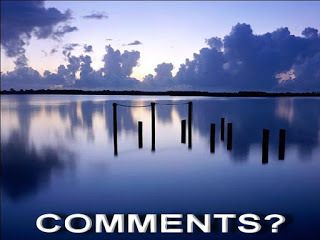
Clancy's comment: Apologies if I missed your birthday, wedding or ....
I'm ...


Published on September 01, 2015 04:06



